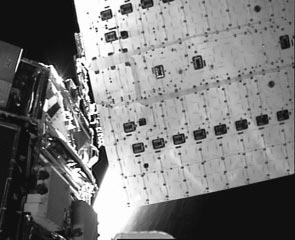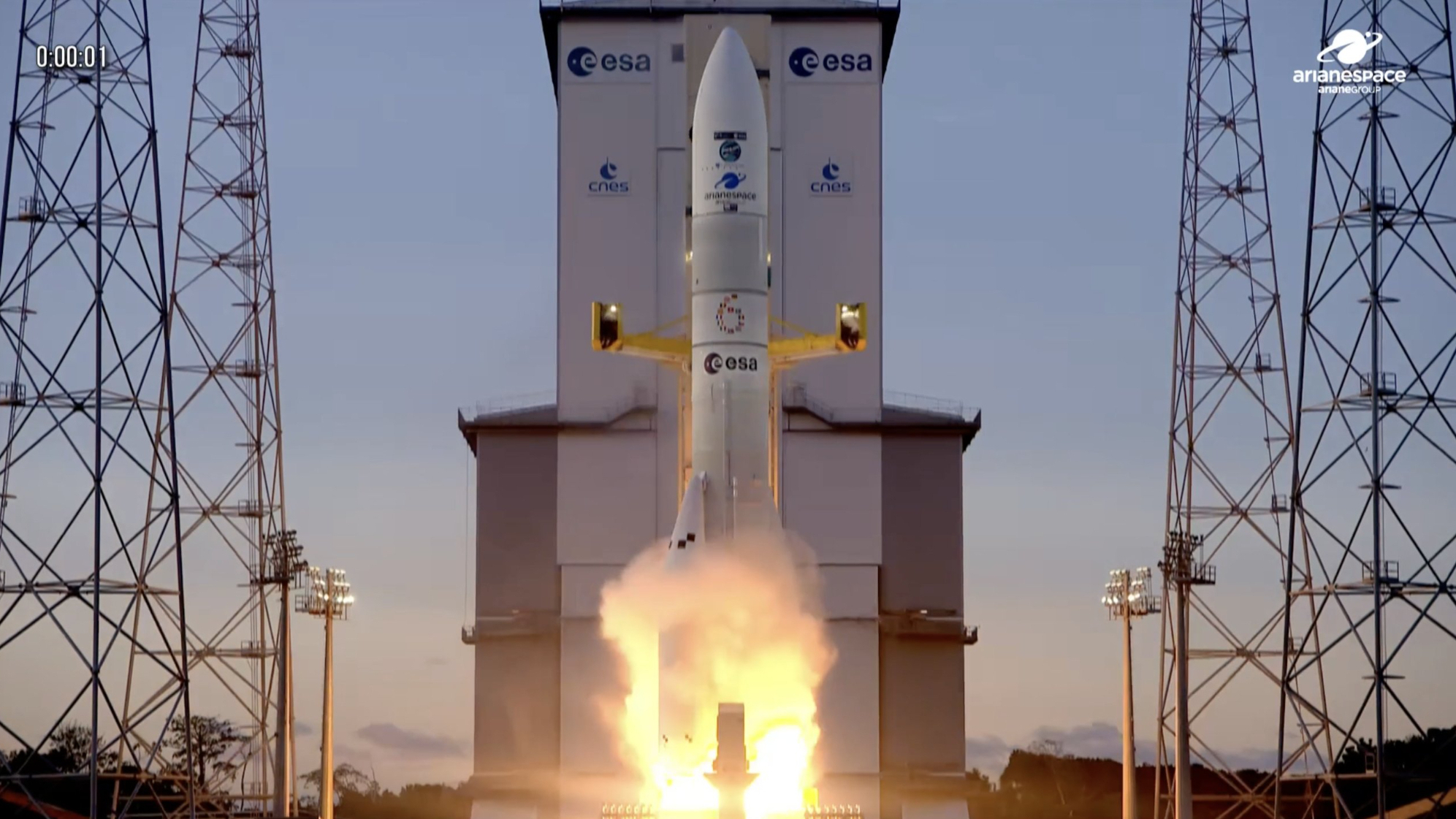Prototype Satellites Demonstrate In-Orbit Refueling

Despite arocky start, two unmanned spacecraft have succeeded in their first autonomous satelliterefueling demonstration while orbiting high above Earth.
The ASTRO satellite,one of two spacecraft flying the OrbitalExpress refueling mission, successfully pumped vital hydrazine fuel intoits NextSat counterpart as part of Scenario 0-1, the first in a series ofincreasingly challenging tests.
"The firstOrbital Express demonstration, Scenario 0-1, was very successful," aspokesperson Jan Walker for the U.S. Defense Advanced Research Projects Agency(DARPA), which is overseeing the mission, said in a written update Wednesday. "ASTROtransferred just under 32 pounds (14 kilograms) of hydrazine to the NextSatclient, meeting the scenario objective."
Walker saidthe robotic arm-equipped ASTRO, short for AutonomousSpace Transport Robotic Operations, first delivered the hydrazine during theearly hours of April 1 via a fluid hookup, and then followed up by transferringan additional 19 pounds (8.6 kilograms) of propellant to NextSat a day later. NextSatwas due to return propellant to ASTRO sometime today, she added.
Inaddition to refueling demonstrations, ASTRO is also designed to perform taskssuch as autonomous undocking, proximity operations and re-docking, as well asuse its robotic arm to install a battery on NextSat.
OrbitalExpress mission managers believe the technology onboard ASTRO and NextSat couldallow future military reconnaissance satelliteskeep station over targets on Earth by providing a renewable propellant source.The technology could also help extend the lifetimes of general-use satellitesby allowing in-flight repairs, equipment replacements or upgrades, missionmanagers have said.
TheOrbital Express mission, however, did suffer a glitch shortly after launch.
Breaking space news, the latest updates on rocket launches, skywatching events and more!
Theincorrect installation of a pitch momentum wheel aboard ASTRO led the spacecraftto react opposite of what its onboard navigation software intended, DARPAofficials said.
"Itwas a combination of hardware and software issues," Walker said of the glitch,adding that flight controllers relied on NextSat's navigation systems to orientASTRO's solar panels towards the Sun until new software could be uploaded. "Withthe updated software, [ASTRO's] commands result in the expected pitch wheelmotion."
ASTROhas already employed a camera on its robotic arm to snap about 1,600 images ofitself and NextSat, currently mated to one another, which Orbital Expressmission managers assembled into a video.
ASTRO'sApril 1 refueling operations with NextSat were performed under a low-autonomylevel, requiring the spacecraft to receive a total of 23 approvals from flightcontrollers on Earth, Walker said. Later this week, ASTRO will transfer abattery from its bay to a corresponding slot aboard NextSat, she added.
OnApril 16, the separation ring joining the two spacecraft together will bejettisoned to mark the beginning of rendezvous and capture activities, Walkersaid.
TheOrbital Express mission launchedon March 8 as part of the U.S. Air Force's Space Test Project-1 (STP-1)mission, with ASTRO and NextSat vehicles successfully reaching orbit alongside fourother small satellites.
The$300 million mission is expected to run about 91 days. Boeing's Phantom Worksled the 2,100-pound (952-kilogram) ASTRO vehicle's development, while BallAerospace oversaw construction of the 500-pound (226-kilogram) NextSat forDARPA.
- VIDEO: The View from Orbital Express
- Orbital Express: Prototype Satellites Primed for In-Flight Service
- All About Satellites

Tariq is the award-winning Editor-in-Chief of Space.com and joined the team in 2001. He covers human spaceflight, as well as skywatching and entertainment. He became Space.com's Editor-in-Chief in 2019. Before joining Space.com, Tariq was a staff reporter for The Los Angeles Times covering education and city beats in La Habra, Fullerton and Huntington Beach. He's a recipient of the 2022 Harry Kolcum Award for excellence in space reporting and the 2025 Space Pioneer Award from the National Space Society. He is an Eagle Scout and Space Camp alum with journalism degrees from the USC and NYU. You can find Tariq at Space.com and as the co-host to the This Week In Space podcast on the TWiT network. To see his latest project, you can follow Tariq on Twitter @tariqjmalik.
